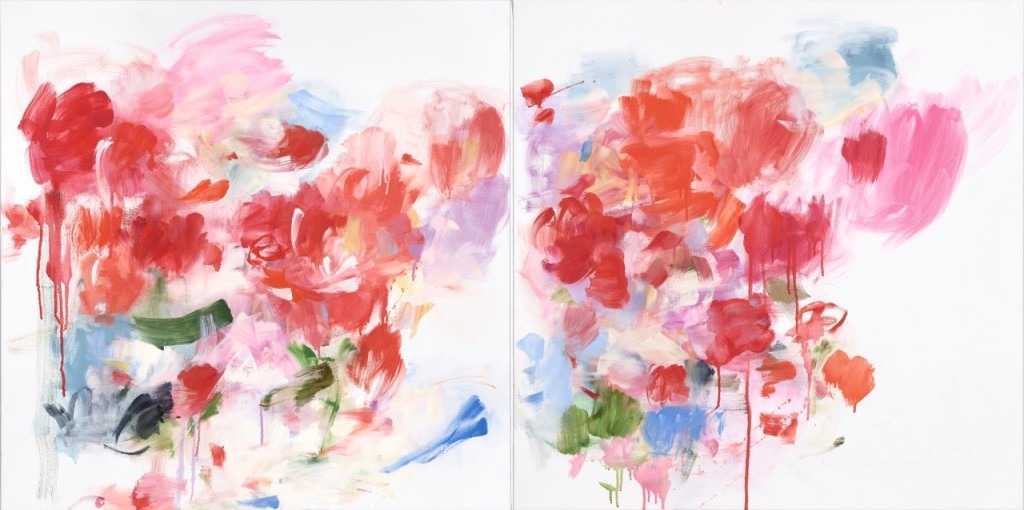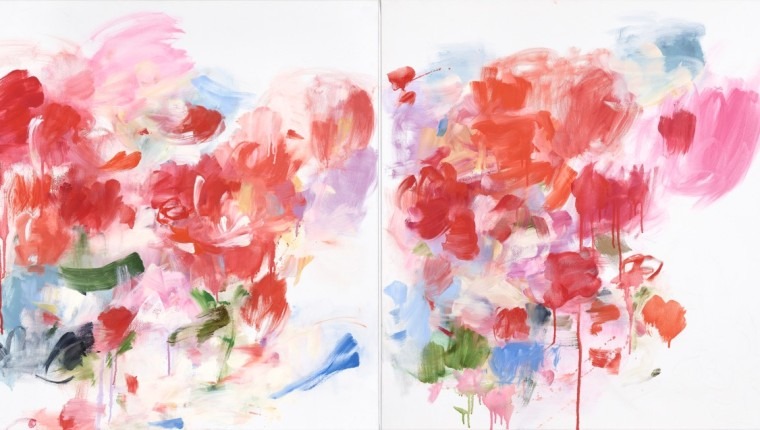By Yolanda Sanchez
Will you see that the world
is really quite beautiful?
Through April 16
Free
Creative Pinellas Gallery
Details here
In her famous book On Beauty and Being Just (2001), essayist Elaine Scarry opens a chapter with the following remarks – “Matisse never hoped to save lives. But he repeatedly said he wanted to make paintings so serenely beautiful that when one came upon them, suddenly all problems would subside.”
I believe we shape the world around us through our perceptions, awareness and attention. I would like to offer an invitation to awaken to beauty.
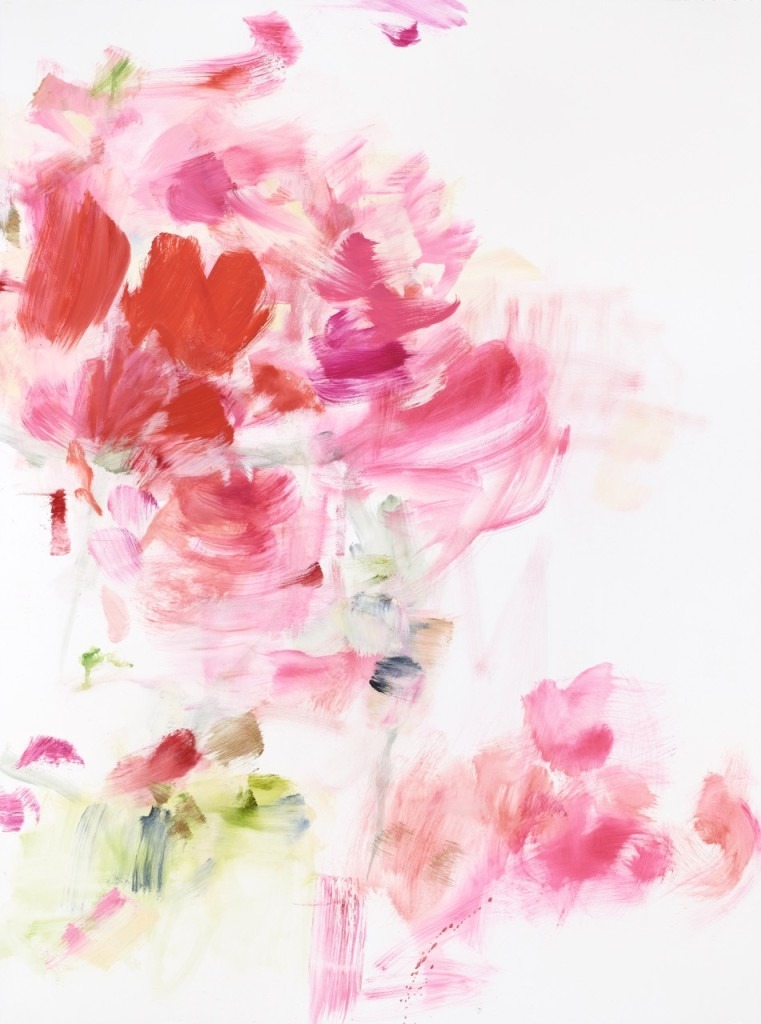
When the viewer engages in a gratifying sensory experience that provides a moment of contemplation, the encounter transforms us even briefly. It is an effort through the viewing experience to fall below the level of thought. Scarry suggests that beautiful things welcome us, restore “our faith in the world,” initiating a “forward momentum,” encouraging us to respond creatively and compassionately in the world.
In a culture crowded with quick glimpses, beauty creates an “unselfing, uncentering” response. We enter a sensorial present, steered away from our “imaginary” central position.
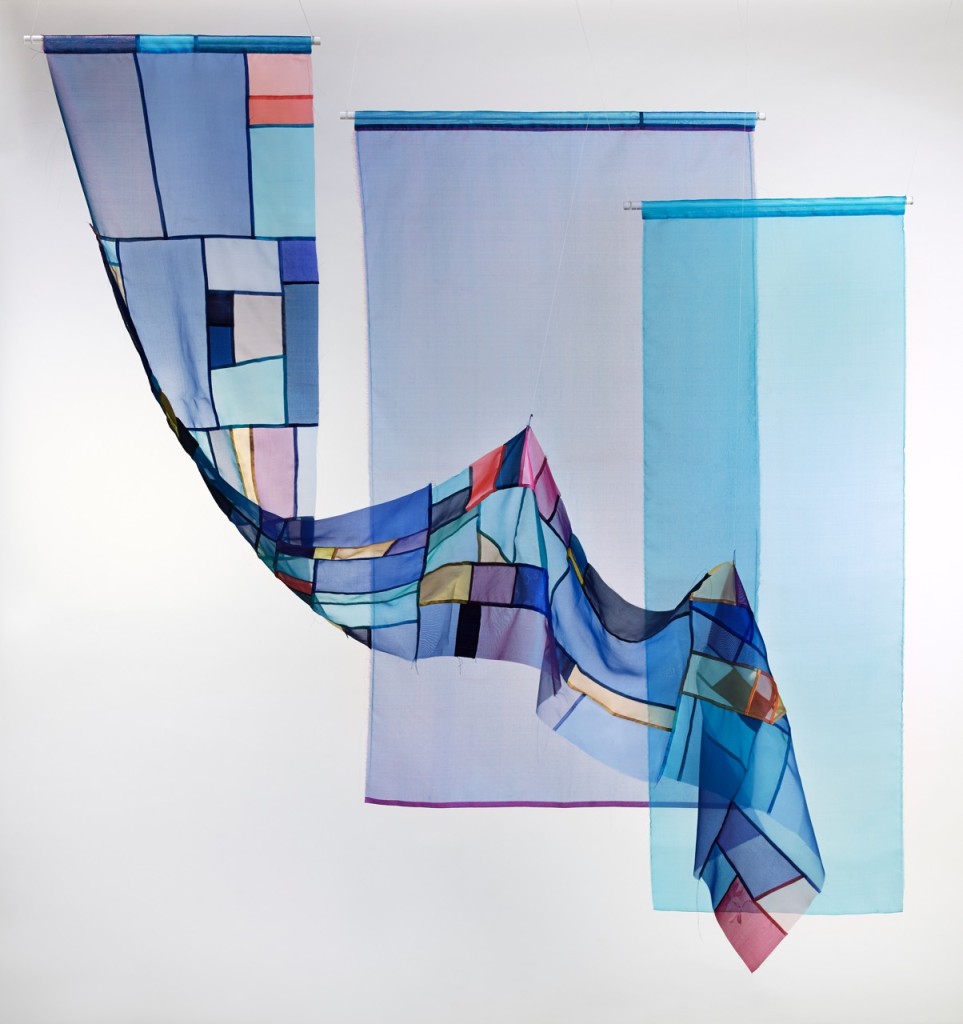
Whether in painting or textiles, my working instruments are rhythm and color. I am interested in the joyful, playful or even spiritual properties of light. I am reflecting the light and color of where I live, of my immediate environment.
This artistic practice is improvisational and process-oriented, abstract. The relationship of one color to another creates a rhythm and tempo and establishes the composition. Each color suggests the next color, almost like the “call and response” form found in many musical traditions. There is a continuous orchestration, as the colors converse with one another, suggesting a mood or vibe.
I am often not sure where it is going or going to go. It is a surprise at every turn. I shape my perception as I work.
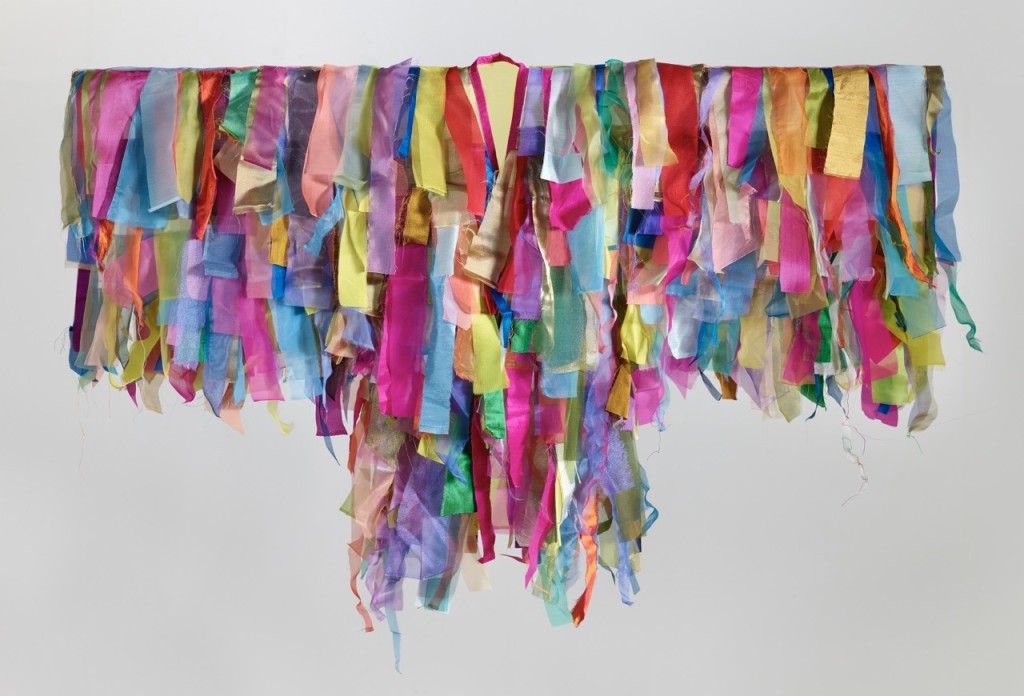
My textile work is informed by the Korean art form known as Bojagi. Humble in its origins, nameless women made these traditional textiles as often extravagant visual pieces using mundane, leftover fabric from wrapping, storing and transporting goods. Over time, the nobility introduced finer, more delicate cloth.
In its traditional form, design characteristics include stitching and seams to create linear elements, especially with translucent fabrics. These features differentiate and distinguish Bojagi from patchwork textiles found in other cultural traditions. Nevertheless, Bojagi shares what feminist art historians identify as centuries-old histories of turning scraps of fabric into beautiful objects and ultimately shifting perspectives from private to public.
I pay homage to these unknown women, authenticating their domestic work – and I affirm their values of inclusion, pleasure, love, the familial, the decorative, the colorful and joyful, the spiritual and the everyday.

My Bojagi-inspired textile work – painting with thread and fabric – honors the Korean tradition. Still, while relying on the conventions and basic structure, these pieces extend and interpret the Bojagi into a more contemporary form. I offer a new direction by varying medium and size and utilizing color compositions and stitching techniques less anchored to established methods.

Material, color, texture and transparency are crucial elements in this work, as is the geometry inherent in the design. While geometry, in this case, emerges from a particular culture, the form does not demand a specific culture-dependent response. Its only function is beauty. It is about the sensual delight derived from looking – the viewer can ascribe or chose meaning, if at all.
As an order, rhythm and pattern are generated within the geometry, creating beauty through harmony and stability, color dominates as a suggestive poetic force, concurrently evoking a connection to my immediate tropical environment. It sets as my intention arousing a sense of place, a feeling, and the atmosphere of an abstract garden, or even a walk through a field of flowers.

It is the color but also the sensuousness of nature that I endeavor to suggest in both my paintings and textiles.
And, I am, indeed, suggesting a connection between beauty and flowers, as many have advocated. For example, environmental writer Michael Pollan points out in his book Botany of Desire that flowers first ushered the idea of beauty into the world when floral attraction emerged as an evolutionary strategy.
He states, “People who were drawn to flowers, and who, further could distinguish among them, would be much more successful foragers than people who were blind to their significance. In time the moment of recognition – much like the quickening one feels whenever spotting a desired object in the landscape – would become pleasurable, and the signifying thing a thing of beauty.”

The idea is that sensual engagement with something tangible – in this case, colorful paintings or geometric textiles alluding to flowers – conjures an inspirational space to roam and dream.
This energizing space exists somewhere between the real and the imagined. The sensory pleasure mediated through the visual experience is, above all else, what I desire to bring forth in the viewer.
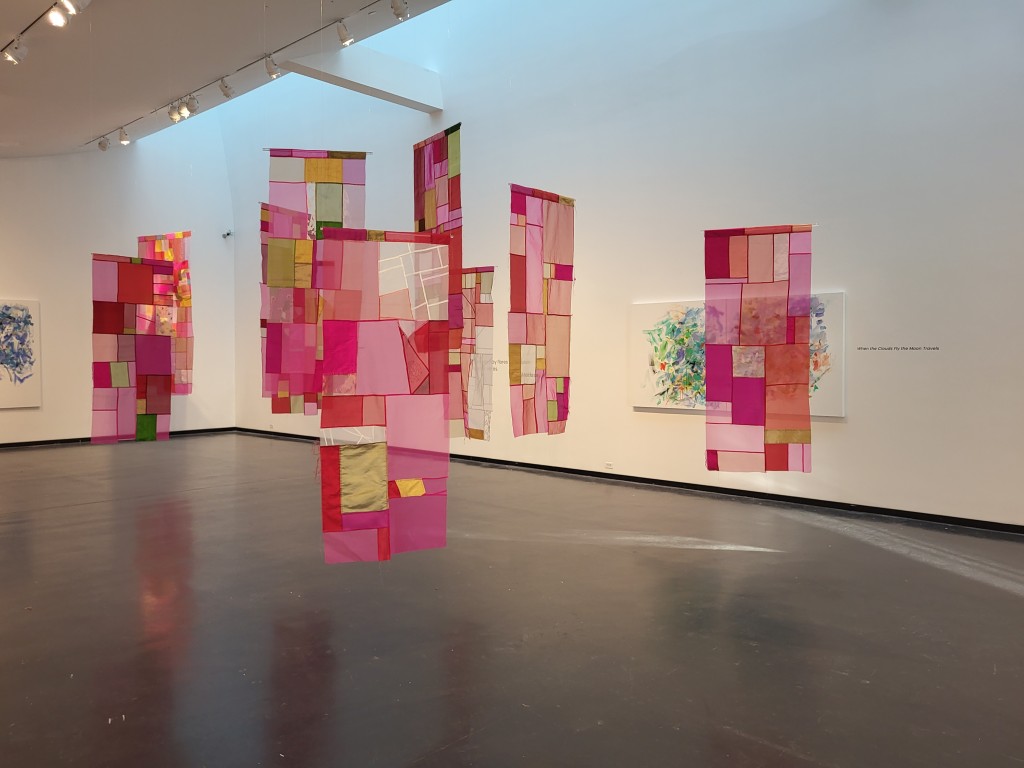
Through my work, in general, and this exhibition – brilliant, intense color and texture restore beauty to its place as a vehicle for communicating humanist values, propelling us toward the good.
This approach has great significance. We know that “how we make choices, how we act, is deeply connected to states of consciousness, and so ‘anything which alters consciousness in the direction of unselfishness, objectivity and realism is to be connected with virtue.’” (Irish and British celebrated novelist Iris Murdoch commented, as quoted in Scarry.)
No longer is a discourse about beauty taboo or regressive. Works of art – the visually perceived environment – and beauty, in particular, have the power to shape our lives.
The pleasure derived from beautiful things inspires and guides our concerns for ourselves, each other and our world.
